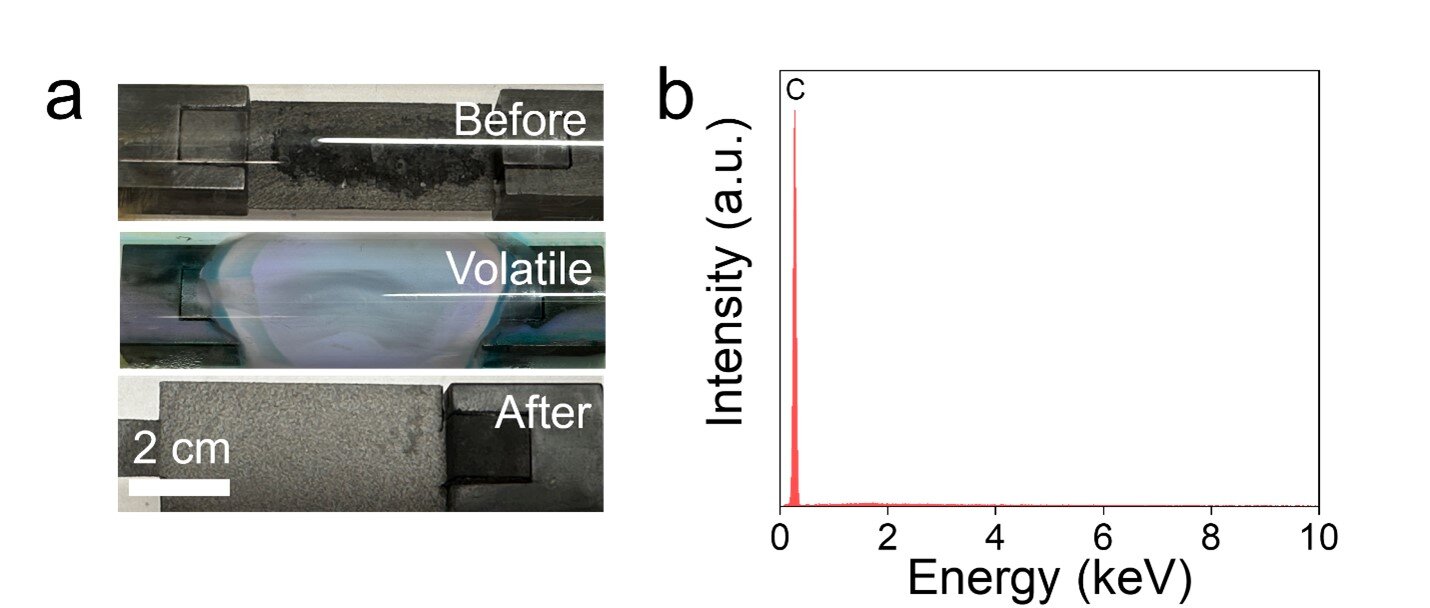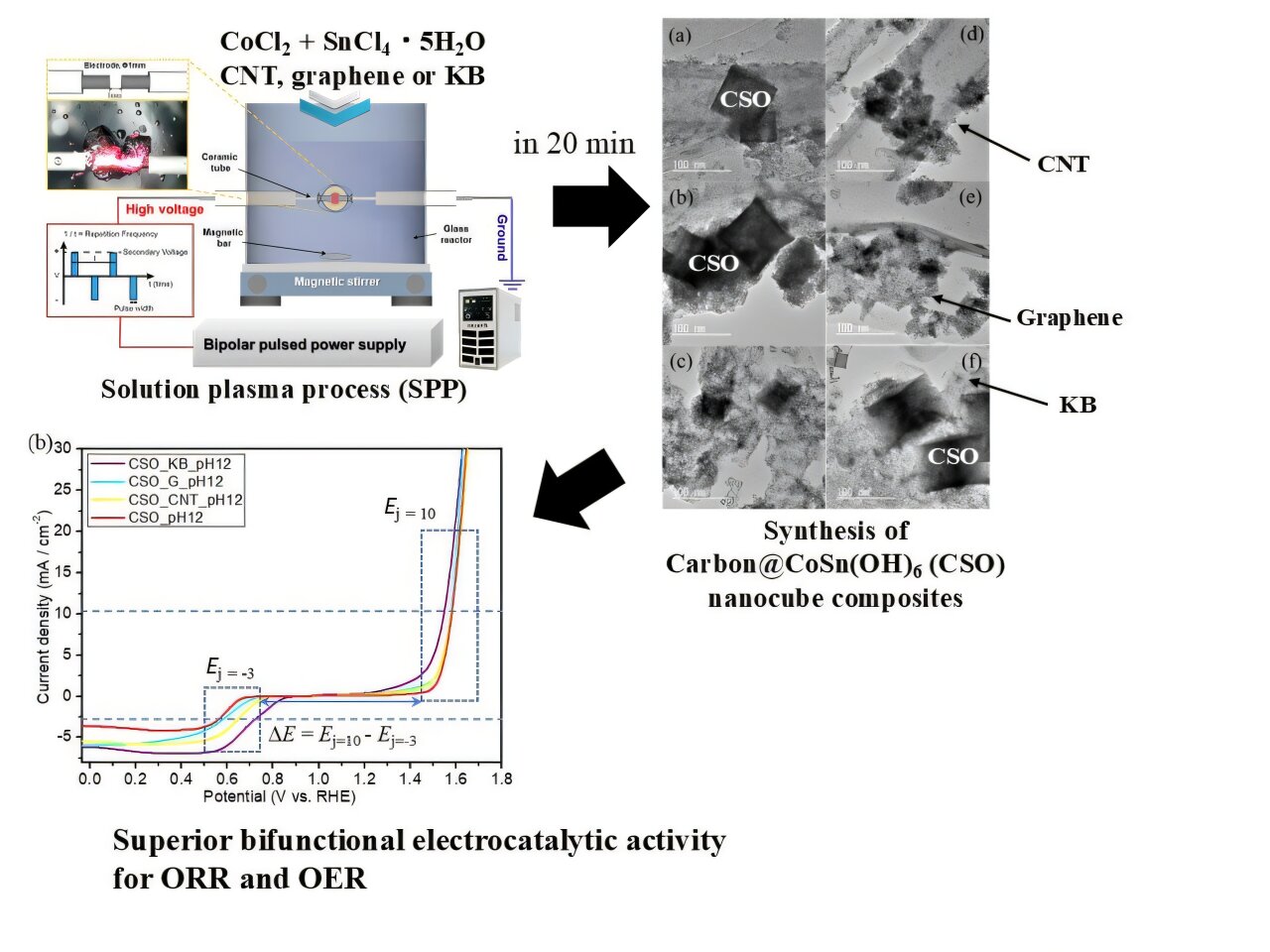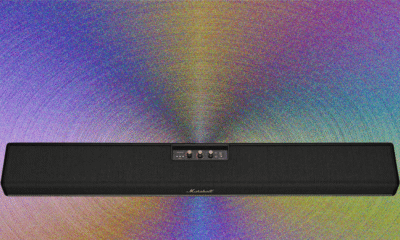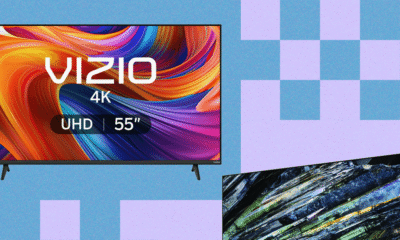Tech
Amazon Prime Big Deal Days Is Next Week, but We Already Found 40 Early Deals

It’s that time of year again, and Prime Day deals are back. The Amazon Prime Big Deal Days event—also known as Amazon Prime Day 2—is officially arriving on October 7 and 8, but early deals have already started. The WIRED Reviews team has hundreds of years of collective experience covering shopping holidays such as this. What sets us apart is that we only write about actual deals on the gear and gadgets that we’ve hand-tested. We’re getting ready to cover the whole sale with a variety of stories and even a liveblog (and, hopefully, lots of caffeine.) Below, you’ll find the best deals we’ve managed to find so far. Come back for additional coverage when the event begins.
Get prepared with our guide on How to Shop Prime Day Like A Pro. We also have advice on avoiding scams on Amazon and making sure you’re getting all of your Amazon Prime perks.
Updated September 30, 2025: We’ve added 10 new deals on a few Amazon devices, the best cheap laptop, a great fitness tracker, our favorite smart bird feeder, and a few other gadgets. We’ve also checked for accuracy throughout.
Featured in this article
Apple iPad (2025, A16) for $299 ($149 off)
This deal comes within $20 of the lowest price we’ve tracked for the best iPad on the market. The 2025 Apple iPad (A16) is cute and comes in a few different colors in your choice of 128-, 256-, or 512-gigabyte storage. It has a modern design, USB-C charging, Touch ID, and two 12-MP cameras. It’s powerful enough for most people, and it doesn’t have support for Apple Intelligence (which may be a blessing or a curse). If you primarily use your tablet to watch videos, play mobile games, or do light work, it’ll be just fine (and you won’t overpay for features you aren’t using). One thing to note is that it only supports the first-generation or USB-C Apple Pencil. Check our guide to the Best iPad Accessories for additional picks.
Nothing Ear (a) for $89 ($20 off)
The Nothing Ear (a) top our list of the best wireless earbuds. They look super cool, with a stylish semi-clear design, on-board touch controls, and a sleek charging case. They pack excellent sound and good noise cancellation, and they’re downright easy to use. The battery lasts about five and a half hours if you’ve got active noise cancellation on. They also pair easily with both Android and iOS devices. This deal comes within $10 of the best discount we’ve tracked.
Nimble Champ (Large) for $90 ($10 off)
The Nimble Champ (Series 2) is the best power bank lineup you can buy, and right now a few different capacities are on sale. They don’t drop in price very often. Every iteration is small and lightweight, with fast charging speeds (that vary from 15 watts to 65, depending on the size) and a durable finish. Nimble’s power banks are made with bioplastics and have minimal packaging, which helps lessen the environmental impact. They’re also nice to look at.
Anker MagGo Power Bank (10K) for $70 ($20 off)
This is the best Qi2 power bank out of the many we’ve tried so far, and we’ve not yet seen it sell for less. It has a built-in kickstand, a two-way USB-C port, and a built-in LED display. You can attach MagSafe iPhones or Qi2 phones in landscape or portrait orientation. It’s not the beefiest power bank in the world, offering about one and a half charges for newer phones, but it’ll definitely come in handy if you just need a quick top-off while on the go—especially since you won’t need to bring your own cable.
Apple MacBook Air (M4, 2025) for $799 ($200 off)
It’s hard to do much better than the MacBook Air (M4, 2025). The best laptop has beefy performance, terrific battery life, and is super quiet thanks to its fanless design. It also has support for two 4K external monitors, and the built-in M4 chip allows for on-device AI processing and support for Apple Intelligence. The webcam boasts 12 megapixels, which is an upgrade compared to previous models, too. It comes in your choice of four different colors and three storage configurations. Check our MacBook buying guide for additional recommendations.
Arlo Pro 5S Security Camera for $100 ($80 off)
This is a great deal on our favorite outdoor security camera, and you can get in on it right before porch pirate season. The Arlo Pro 5 has clear footage, fast live-feed load times, and smart notifications. Recording at up to 2K resolution with HDR, it won’t struggle in low light thanks to night vision, and there’s also a color mode. Two-way audio is clear, and there’s a built-in siren too. You do need an Arlo Secure subscription to make the most of this camera, but the deal is solid. The multipacks are discounted, too.
Amazon Kindle Scribe (2024) for $300 ($100 off)
Full disclosure: A new Kindle Scribe is coming, but we still think this is worth buying. The Kindle Scribe is our favorite e-reader for taking notes. It works well as a digital notebook and as a way to read your favorite books. With a generous 10-inch display and a Premium Pen (with a soft-tipped eraser on the end) included, you can use it to plan, journal, or annotate. There are some AI software features like note summarization, too. We do wish it was waterproof, or that it had some color features like the new model will, but if you’re in the market for something like it, it’s worth considering. There’s a chance it will get slightly cheaper when Prime Day actually arrives, but it likely won’t be by much—especially considering this is a match of the lowest price we’ve tracked.
Ultrahuman Ring Air for $300 ($50 off)
This smart ring is our favorite without a subscription. Importantly, due to a ruling by the FTC, these rings will no longer be available for purchase in the US after October 21 (though Ultrahuman says existing rings will still be supported). If you have been eyeing one, this deal is a match of the best we have tracked so far. The Ring Air can track your heart rate, blood oxygen, physical activity, and sleep, and it’ll offer insights about changes in your heart rate variability or skin temperature. There are some additional convenient features like a smart alarm that’ll wake you up during a lighter part of your sleep cycle, too.
Power up with unlimited access to WIRED. Get best-in-class reporting and exclusive subscriber content that’s too important to ignore. Subscribe Today.
Tech
WIRED Roundup: Fandom in Politics, Zuckerberg’s Illegal School, and Nepal’s Discord Revolution

Leah Feiger: Zoë, I am obsessed with this story. Before you continue, I think that it’s really important to say that Caroline, the lovely reporter of this story on your business desk, obtained 1,665 pages of documents about the dispute about Zuckerberg’s house. This story is canon now.
Zoë Schiffer: Caroline Haskins is a complete star. Our fact-checking team literally cried when I asked them. They were like, “Wait, sorry, how many documents are we looking through?” I was like, “Yes.”
Leah Feiger: Shout out to the WIRED research team.
Zoë Schiffer: Absolutely. The school, I think we just have to say, is named after one of the Zuckerberg family chickens. It’s called the Bicken Ben School.
Leah Feiger: I mean, hearing you say this, it’s, I know you’re being serious, but again.
Zoë Schiffer: So, the Crescent City neighborhood in Palo Alto, where the Zuckerbergs live, as you can imagine, is some of the best real estate in the entire country. It’s filled with these gorgeous homes, a ton of greenery. Mark Zuckerberg has been expanding his presence throughout the years in this ultra fancy neighborhood. The plot of land that the Zuckerbergs live on has expanded to include 11 previously separate properties. This is so funny and just such a nightmare. If you’re living on the street, you paid whatever, $5 million for your house, and suddenly all of your neighbors are Mark Zuckerberg.
Leah Feiger: Important to note that not all of them are connecting either. I don’t totally understand what that means. Do they walk through a neighbor’s porch to get to their horse’s pool? What does this entail?
Zoë Schiffer: We have more questions. We have to Google Earth this. I think there’s some holes in this story that we need to fill in. The expansion first became a concern for Mark Zuckerberg’s neighbors, back in 2016, due to fears that his purchases were driving up the market pretty dramatically. But then, about five years later, neighbors started noticing that a school appeared to be operating out of the Zuckerberg compound. So, this is illegal to do without a permit, at least under the area’s residential zoning code. And so, naturally, the neighbors started to alert the city. Caroline Haskins, the reporter on the story, obtained over a thousand documents, like you said, outlining the resulting fight between the neighbors and the city authorities, basically arguing that, it felt to them like the Zuckerbergs were getting special treatment.
Tech
Two-step flash Joule heating method recovers lithium‑ion battery materials quickly and cleanly

A research team at Rice University led by James Tour has developed a two-step flash Joule heating-chlorination and oxidation (FJH-ClO) process that rapidly separates lithium and transition metals from spent lithium-ion batteries. The method provides an acid-free, energy-saving alternative to conventional recycling techniques, a breakthrough that aligns with the surging global demand for batteries used in electric vehicles and portable electronics.
Published in Advanced Materials, this research could transform the recovery of critical battery materials. Traditional recycling methods are often energy intensive, generate wastewater and frequently require harsh chemicals. In contrast, the FJH-ClO process achieves high yields and purity of lithium, cobalt and graphite while reducing energy consumption, chemical usage and costs.
“We designed the FJH-ClO process to challenge the notion that battery recycling must rely on acid leaching,” said Tour, the T.T. and W.F. Chao Professor of Chemistry and professor of materials science and nanoengineering. “FJH-ClO is a fast, precise way to extract valuable materials without damaging them or harming the environment.”
Quick, controlled heating
The rapid increase in the use of lithium-ion batteries in electric vehicles and consumer electronics has intensified the need for sustainable recycling technologies. Existing recycling methods are often costly and inefficient while producing significant amounts of wastewater.
To tackle these challenges, the research team developed a two-step process that uses brief bursts of heat and air instead of harsh chemicals. First, the battery materials are briefly heated with chlorine gas, which breaks them down. They then undergo a second heating in air, transforming most of the metals into forms that can be separated from lithium. Because lithium does not form an oxide as easily as other metals, it remains as the chloride, which can be easily extracted using water.
Previous methods required lengthy processes and strong acids. The FJH-ClO approach, however, uses fast, controlled heating and simple reactions to make the separation process cleaner and faster.
Holistic recovery
Tests have shown that the new process can recover nearly all valuable materials from used batteries, including lithium, cobalt and graphite, with high purity. Early analyses suggest that even at a small scale, it may require about half as much energy, 95% fewer chemicals and significantly lower costs compared to existing methods.
These results establish a scalable, acid-free approach for the comprehensive recovery of lithium-ion battery materials, offering both environmental and economic advantages while setting a new standard for sustainable battery recycling.
“It’s rewarding to see a process that’s both scientifically sound and practically useful,” said Shichen Xu, the study’s first author and a Rice postdoctoral researcher. “That balance is what makes real-world impact possible.”
Future implications
This process paves the way for large-scale implementation and integration into the battery supply chain. It provides a foundation for recovering valuable materials while reducing the need for virgin mining.
With the FJH-ClO process already proven at the laboratory scale, the researchers plan to scale the process through their startup, Flash Metals U.S., a division of Metallium Ltd.
“This is more than just a lab experiment,” Tour said. “It’s a blueprint for how the industry can meet the demand for battery materials without further straining the planet.”
Co-authors of this study include Justin Sharp, Qiming Liu, Jaeho Shin, Haoxin Ye, Kaiwen Yang, Carter Kittrell, Haojie Zhu, Carolyn Teng, Bowen Li, Shihui Chen and Karla Silva from Rice’s Department of Chemistry; Ralph Abdel Nour from its Applied Physics Program and Smalley-Curl Institute; and Khalil JeBailey, Boris Yakobson and Yufeng Zhao from its Department of Materials Science and NanoEngineering.
More information:
Shichen Xu et al, Holistic Recovery of Spent Lithium‐Ion Batteries by Flash Joule Heating, Advanced Materials (2025). DOI: 10.1002/adma.202517293
Citation:
Two-step flash Joule heating method recovers lithium‑ion battery materials quickly and cleanly (2025, November 17)
retrieved 17 November 2025
from https://techxplore.com/news/2025-11-joule-method-recovers-lithiumion-battery.html
This document is subject to copyright. Apart from any fair dealing for the purpose of private study or research, no
part may be reproduced without the written permission. The content is provided for information purposes only.
Tech
Plasma-based method creates efficient, low-cost catalysts for metal–air batteries

Due to the intense global impact of fossil fuel overuse on air quality and climate, the search for advanced clean energy solutions has become critical. Metal–air batteries offer a game-changing alternative, holding the potential to replace combustion engines in various applications.
By electrochemically converting oxygen from the air into power, these batteries achieve theoretical energy densities up to twelve times higher than lithium-ion cells, delivering unprecedented efficiency with zero operational emissions.
Challenges facing metal–air battery adoption
Despite their theoretical advantages, metal–air batteries have yet to achieve widespread commercial viability due to several critical obstacles. Current high-performance catalysts primarily depend on expensive precious metals, such as platinum and ruthenium, rendering them economically unfeasible for mass production and large-scale deployment.
Furthermore, most existing catalyst materials are monofunctional, efficiently driving only one of the two essential electrochemical processes—the oxygen reduction reaction (ORR) or the oxygen evolution reaction (OER)—but not both.
Compounding these issues, the complex, multi-step synthesis processes required for these catalysts inflate manufacturing costs and severely restrict scalability.
Innovative research tackles catalyst limitations
Against this backdrop, a research team led by Professor Takahiro Ishizaki from the College of Engineering at Shibaura Institute of Technology, Japan, and Assistant Professor Sangwoo Chae from Nagoya University, Japan, has been working hard to find appropriate solutions to these issues.
In their latest study, published in Sustainable Energy & Fuels, they report a revolutionary single-step method for creating highly effective bifunctional catalysts using abundant, low-cost materials.
The researchers utilized the recently pioneered solution plasma process (SPP) for the synthesis, successfully creating cobalt-tin hydroxide (CoSn(OH)6) composites anchored to various carbon supports. This is a critical distinction from conventional catalyst synthesis: unlike traditional, multi-step methods that require surfactants and extensive post-processing, SPP enables rapid, single-step synthesis at room temperature under ambient atmospheric conditions.
This plasma-based approach not only confers unique surface properties that significantly boost catalytic activity but also dramatically slashes manufacturing complexity and production costs.
The research team systematically produced catalysts with varied compositions and carbon structures, rigorously testing their bifunctional performance in both the oxygen reduction (ORR) and oxygen evolution (OER) reactions—the two pivotal processes determining overall battery efficiency.
Their best-performing catalyst, combining CoSn(OH)6 with Ketjen Black carbon, achieved remarkable results. For oxygen evolution, it outperformed the industry-standard ruthenium oxide catalyst, requiring lower voltages to achieve the same current densities. In oxygen reduction, it exhibited performance comparable to much more expensive platinum-based catalysts while relying solely on abundant materials.
Moreover, this new catalyst proved to be quite durable, as Prof. Ishizaki says, “Our advanced CoSn(OH)6–Ketjen Black composite exhibited exceptional long-term stability, maintaining its superior oxygen evolution performance for over 12 hours without degradation, a crucial factor for real-world battery applications.”
Notably, the catalyst’s ability to efficiently catalyze both required reactions represents a significant advancement in the field. The researchers measured a potential gap of just 0.835 V between the two reactions, thus enabling highly efficient energy conversion. This dual functionality eliminates the need for separate catalysts, further reducing system complexity and costs.
Detailed analysis confirms that the superior catalytic performance stems from powerful synergistic interactions between the (CoSn(OH)6) nanoparticles and the carbon support.
The researchers discovered that the SPP synthesis process is key: it ensures a uniform distribution of active nanoparticles across the carbon surface, which maximizes the exposure of catalytic sites while simultaneously guaranteeing excellent electrical conductivity.
Furthermore, the method offers precise control over particle size and crucial surface properties, allowing for systematic optimization of catalytic activity.
“This breakthrough holds profound potential to customize and manufacture high-performance, durable, and low-cost bifunctional electrocatalysts for critical energy conversion systems,” highlights Prof. Ishizaki. “It offers a truly sustainable material alternative to commercially used precious metal-based catalysts.”
Implications for energy storage and industry
The implications of this work are far-reaching, promising a revolution across the energy sector. Metal–air batteries powered by these newly developed catalysts could fundamentally transform energy storage for electric vehicles, offering a significantly longer range and faster charging capabilities while simultaneously reducing overall costs.
Furthermore, the technology holds immense potential for grid-scale energy storage, which is crucial for the efficient integration of intermittent renewable sources like solar and wind power into electrical networks. The proposed single-step synthesis method offers equally profound industrial advantages.
By eliminating complex, multi-step processing and reliance on expensive raw materials, manufacturers can produce these high-performing catalysts at a fraction of the current cost. Moreover, the ability to synthesize these materials under ambient conditions drastically reduces energy consumption and environmental impact compared to conventional high-temperature, high-pressure methods currently used in battery and catalyst production.
Overall, this research represents a crucial and transformative step toward achieving economically viable clean energy storage on a global scale, poised to significantly accelerate the essential transition away from fossil fuels in the transportation and energy sectors.
More information:
Sangwoo Chae et al, Single-step solution plasma synthesis of bifunctional CoSn(OH)6–carbon composite electrocatalysts for oxygen evolution and oxygen reduction reactions, Sustainable Energy & Fuels (2025). DOI: 10.1039/d5se00370a
Citation:
Plasma-based method creates efficient, low-cost catalysts for metal–air batteries (2025, November 17)
retrieved 17 November 2025
from https://techxplore.com/news/2025-11-plasma-based-method-efficient-catalysts.html
This document is subject to copyright. Apart from any fair dealing for the purpose of private study or research, no
part may be reproduced without the written permission. The content is provided for information purposes only.
-

 Tech1 week ago
Tech1 week agoFrom waste to asset: Turning ethanol production CO₂ into jet fuel
-

 Tech2 days ago
Tech2 days agoNew carbon capture method uses water and pressure to remove CO₂ from emissions at half current costs
-

 Politics4 days ago
Politics4 days agoBritish-Pakistani honoured for transforming UK halal meat industry
-

 Sports2 days ago
Sports2 days agoTexas A&M officer scolds South Carolina wide receiver after touchdown; department speaks out
-
Sports1 week ago
College football winners and losers: The catch of the year saves Indiana
-

 Business1 week ago
Business1 week agoMore than 1,000 flights cancelled as US air traffic cuts enter second day
-

 Politics5 days ago
Politics5 days agoInternet freedom declines in US, Germany amid growing online restrictions
-

 Fashion3 days ago
Fashion3 days agoAfter London, Leeds and Newcastle, next stop Glasgow for busy Omnes




-SOURCE-Parker-Hall.jpg)
-Portable-Charger-Reviewer-Photo-(no-border)-SOURCE-Simon-Hill.jpg)
.jpg)
-Reviewer-Photo-SOURCE-Brenda-Stolyar.jpg)























